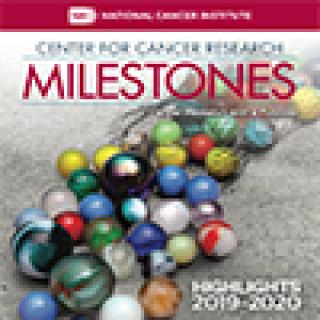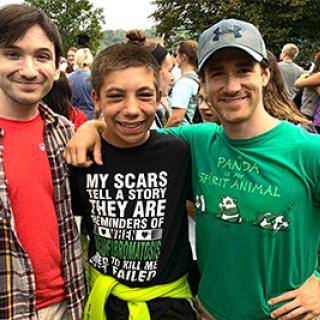In the Spotlight
Sarcoma Awareness Month
To recognize Sarcoma Awareness Month this July, we are highlighting our researchers who are advancing research discovery in this field. Learn more...
Read MoreA Conversation with Christina Annunziata, M.D., Ph.D.
Christina Annunziata, M.D., Ph.D., is an Investigator in the Women’s Malignancies Branch at the Center for Cancer Research. She has spent most of her career studying the molecular underpinnings of ovarian cancer with the goal of discovering novel treatments. In our Q&A, Dr. Annunziata discusses her personal and professional milestones as well as new directions for her research.
Read MoreA Conversation with Bríd Ryan, Ph.D., M.P.H.
Bríd Ryan, Ph.D., M.P.H., is an NIH Stadtman Investigator in the Laboratory of Human Carcinogenesis at the Center for Cancer Research. Her research focuses on health disparities related to lung cancer across different populations. She discusses her latest research findings and future directions of her work as well as the importance of the supportive CCR environment in this Q&A.
Read MoreNew Milestones publication now available
Every year, the Center for Cancer Research makes remarkable contributions to the understanding, detection, treatment and prevention of cancer. This issue of our annual publication, Milestones, features some of the most impactful science conducted in the past year in CCR. These advances include new insights into how genomes are organized and how DNA and RNA function in cells, how cellular processes and signaling events function in healthy cells and how they are affected in cancer. Other major discoveries this year include how cancers become metastatic and what drives the proliferation of cancer cells.
Read MoreFormer Pediatric Oncology Branch patient donates toys to NIH Pediatric Clinic
In December, former patient Julie Jones donated over 1,000 toys to the Pediatric Clinic at the NIH Clinical Center. Jones is a former patient in the Pediatric Oncology Branch who was treated more than 20 years ago for alveolar rhabdomyosarcoma. She says, “I remember what it was like. What these children are going through at such a young age really breaks your heart. I’ve often said there’s nothing greater than seeing the smile on the face of a sick child.”
Read MoreNeurofibromatosis type 1 patient attends Camp Fantastic for the first time
Thirteen-year-old Dom was diagnosed with neurofibromatosis type 1 at birth. Because of Dom’s diagnosis, he hasn’t always had the opportunity to do the things the average teenager does, but his first year at Camp Fantastic changed that. Camp Fantastic, an annual week-long camp for pediatric cancer patients and survivors, gave Dom the opportunity to try lots of new things and some familiar ones in a setting of support, safety and friendship.
Read MoreLandmark discovery: H2AX as a sensor of DNA damage
William Bonner’s curiosity about histones led to the discovery that the protein H2AX is altered in response to harmful DNA damage called a double-strand break. This powerful tool has led to breakthroughs in both basic and clinical cancer research.
Read MoreFDA grants orphan drug status to selumetinib for neurofibromatosis type 1 (NF1) treatment
The U.S. Food and Drug Administration granted orphan drug status in February to selumetinib for use in patients with the genetic disorder neurofibromatosis type 1 (NF1), who often develop tumors of the peripheral nervous system. Receiving orphan drug designation is a helpful step for selumetinib.
Read More






